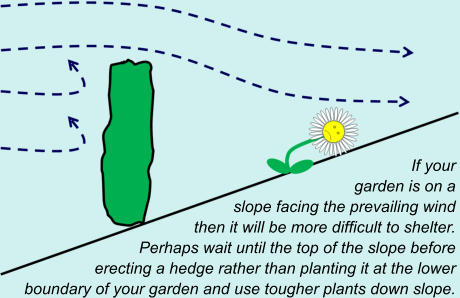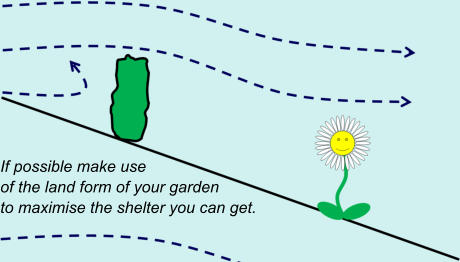
© Garden Cottage Nursery, 2022

How and Why To Plant
Coastal Shelter
Windbreaks and Hedges


Having protection from salty gales will greatly increase the possibilities for a coastal garden. With more shelter from the wind you
can grow a far wider range of plants and you can go out into the garden without being blown over so often.
Wind is moving masses of atmosphere, see the Met Office’s definition here.
A simplified definition could be that air is at different temperatures in different places, as air warms it expands, raising it’s pressure
and causing it to be ‘sucked’ towards areas of cooler, lower pressure, air. On a weather map those dense isobar lines you see when
a storm is coming indicate a steep pressure gradient between areas of high and low pressure atmosphere.
For maximum effect a hedge or windbreak should be perpendicular to the prevailing (SW) wind, protection against wind from other
quarters is nice too but will be useful less often.
Put simply the wider, taller and deeper any protective screen from the wind is, the more protection it will give.
The sheltered area behind a hedge or windbreak is
proportional to the height of the barrier. A short hedge
(<1.5m / 5’) will be more of an ornament than a practical
shelter as the lower air pressure in the lee soon draws the
wind back to ground level.
With a higher hedge or windbreak it takes further in the lee
for the wind to draw back to ground level.
Wind will also curl in around the sides of a windbreak or
hedge, so the wider a barrier as well as higher, the more
ground it will protect behind.
It is better to make your shelter somewhat permeable to the
wind, slowing the wind rather than stopping it. With a solid
barrier like a wall the pressure difference between the air
passing over the barrier and the air behind it is significant
and this creates lots of damaging turbulence as the air tries
to equalise the pressure.
A multi-layered windbreak is the ideal solution where space
and budget allows. The canopies of the trees and bushes will
filter rather than stop dead the wind. Therefore the pressure
difference between the lee and the windward side is less
than with a solid barrier, leading to less damaging turbulence.

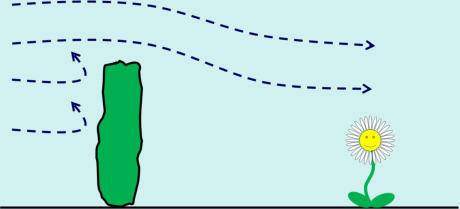
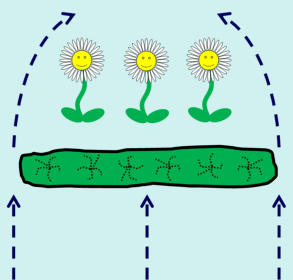
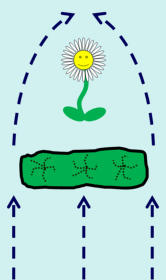
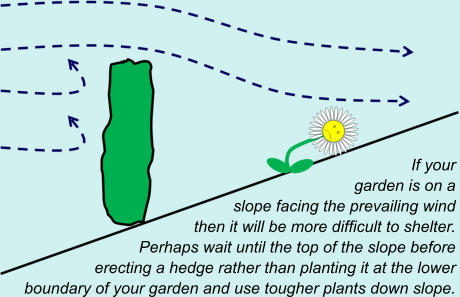
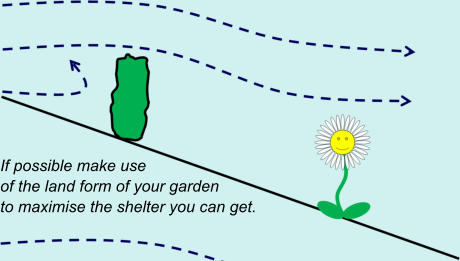











© Garden Cottage Nursery, 2021

How and Why To Plant
Coastal Shelter
Windbreaks
and Hedges


Having protection from salty gales will greatly increase the
possibilities for a coastal garden. With more shelter from the
wind you can grow a far wider range of plants and you can go
out into the garden without being blown over so often.
Wind is moving masses of atmosphere, see the Met Office’s
definition here.
A simplified definition could be that air is at different
temperatures in different places, as air warms it expands,
raising it’s pressure and causing it to be ‘sucked’ towards areas
of cooler, lower pressure, air. On a weather map those dense
isobar lines you see when a storm is coming indicate a steep
pressure gradient between areas of high and low pressure
atmosphere.
For maximum effect a hedge or windbreak should be
perpendicular to the prevailing (SW) wind, protection against
wind from other quarters is nice too but will be useful less often.
Put simply the wider, taller and deeper any protective screen
from the wind is, the more protection it will give.
The sheltered area behind a hedge or windbreak is proportional
to the height of the barrier. A short hedge (<1.5m / 5’) will be
more of an ornament than a practical shelter as the lower air
pressure in the lee soon draws the wind back to ground level.
With a higher hedge or windbreak it takes further in the lee for
the wind to draw back to ground level.
Wind will also curl in around the sides of a windbreak or hedge,
so the wider a barrier as well as higher, the more ground it will
protect behind.
It is better to make your shelter somewhat permeable to the
wind, slowing the wind rather than stopping it. With a solid
barrier like a wall the pressure difference between the air
passing over the barrier and the air behind it is significant and
this creates lots of damaging turbulence as the air tries to
equalise the pressure.
A multi-layered windbreak is the ideal solution where space and
budget allows. The canopies of the trees and bushes will filter
rather than stop dead the wind. Therefore the pressure
difference between the lee and the windward side is less than
with a solid barrier, leading to less damaging turbulence.




